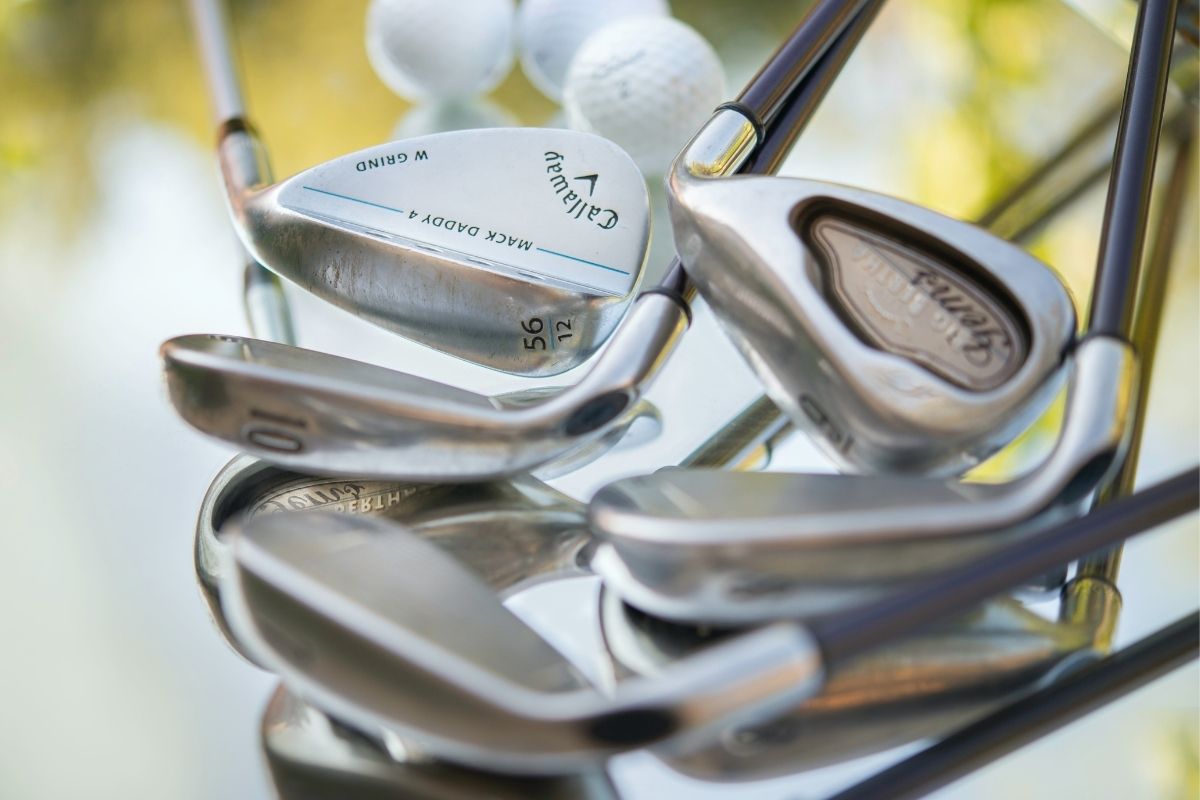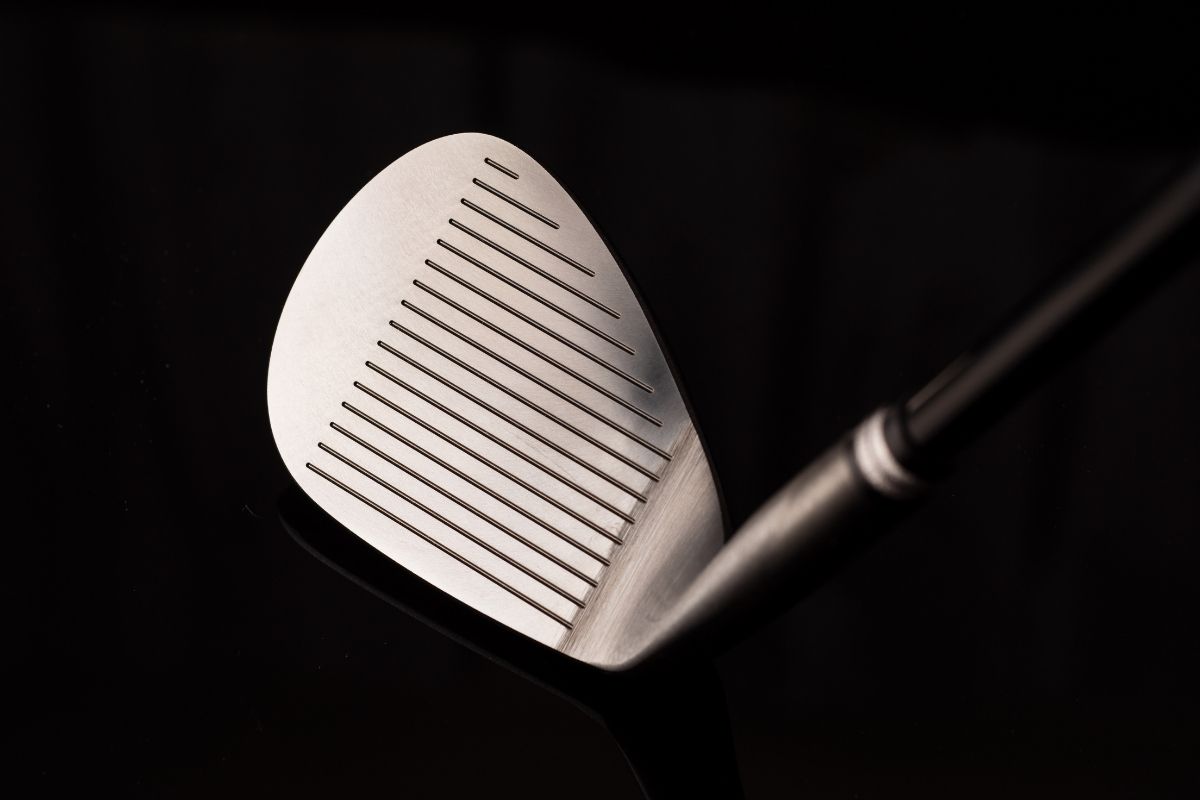We occasionally recommend products we love and might be paid a share of the sale.
Anybody who plays golf regularly should know every detail and specification of the clubs in their bag. After all, this is the equipment you’ll use to get the best possible score out on the course.
There’s obviously a wide variety of clubs that most golfers will use on a single hole and it can be pretty tricky to work out what the best one will be for a certain shot.

That’s why we’ve compiled this handy guide to help you understand how the degree of loft can impact each shot. Specifically, we’re talking about the sand wedge.
Most sand wedges will have a loft of 54-58 degrees, though it can vary between different manufacturers.
Stick around to find out how this could affect your game and learn about the best shots to bust out the sand wedge for.
What Is Loft In Golf?
Loft refers to the angle at which the face of a clubhead points relative to the ground when it strikes the ball.
In general terms, the higher the loft, the more upwardly angled the face of the clubhead becomes as it approaches impact with the ball.
This means that the farther back the ball lies on its trajectory, the greater the angle of attack by which the club face must strike the ball to impart maximum spin onto it.
Even if you don’t fully understand the physics behind it, the bottom line is simple. A higher loft means that the ball will travel higher into the air, but will ultimately travel a shorter distance.
As you can imagine, loft is an important aspect to consider when deciding which club is best for a particular shot.
For example, the driver is the club with the lowest loft because its job is simply to make the ball travel as far as possible from the tee and height isn’t as important a consideration.
Alternatively, if you’re trying to get the ball from a low point, up onto a higher green, a more lofted club would be appropriate.
The same is also true if you’re trying to get your ball over an obstacle like a rock or a tree branch.
What Is A Sand Wedge In Golf?
As the name suggests, sand wedges are designed to hit the ball out of a sand-filled bunker. Bunkers are tricky obstacles on a golf course because they make it difficult to get the clubhead underneath the ball and make an accurate shot.
They’re not usually used to drive long distances, since they lack the power necessary to launch the ball very far.
Instead, they’re often used to chip or pitch the ball towards the flagstick. That’s because sand wedges tend to have a higher loft than other clubs in your bag.
Typically, these clubs will have a loft of 54-58 degrees, but again, it varies depending on the manufacturer.
You’ll probably notice that your sand wedge also has a more rounded sole than other wedges and irons. This shape makes it better for cutting through the sand underneath the ball, where other clubs would end up getting stuck and hindering your shot.

Whilst sand wedges are great for getting the ball out of bunkers, they do come with some drawbacks.
One of the biggest issues with them is that they’re relatively easy to misjudge. If you try to hit the ball too high, it won’t go anywhere near where you intended it to go.
If you try to hit it too low, it’ll just sail straight past the target area. This makes them ideal for chipping and pitching, but less so for hitting fairways and greens.
Sand wedges are also quite heavy, making it harder to swing through the ball. They’re also fairly expensive compared to other types of clubs.
That said, there are still plenty of good reasons why you should own one. For example, if you want to play a round without using any irons, then a sand wedge could be perfect.
You might even find yourself using this type of club more frequently than others.
However, before you buy one, you need to know what kind of player you are. Do you prefer to use a short iron or a putter? How much weight do you carry around? These questions will help you decide whether a sand wedge is right for you.
How To Use A Sand Wedge On The Course
Now that we’ve covered everything about sand wedges, let’s take a look at how to actually use them.
To begin with, you’ll probably only use this club to chip and pitch the ball. You’ll use a normal stance and grip position, but you’ll keep your hands closer together than usual.
Of course, depending on how steep a bunker you’re playing from or if the ground around you is uneven, you might need to use a pretty unorthodox stance.
Once you’ve mastered this technique, you can start experimenting with different shots.
If you’re trying to cut into rough, you might want to use a looser grip and a higher lofted club.
The key thing here is to experiment and see which combination works best for you.
After all, you don’t want to spend hours practicing every single shot when you could be doing something else instead!
The last thing worth mentioning is that sand wedges aren’t designed to be used by everyone.
They’re not suitable for players who struggle with their balance or have weak wrists.
In fact, unless you’re a high-level, regular golfer, you can easily get away without having one in your bag at all.
Lofts Of Other Wedges
There are a few other wedges in many golfer’s bags that can be used for different types of shots and different purposes.
Each wedge has its own degree of loft that better suits it for certain situations:
- Pitching wedge: 45-48 degrees
- Gap wedge: 50-54 degrees
- Sand wedge: 54-58 degrees
- Lob wedge: 58-62 degrees
Conclusion
As you can see, golf club manufacturers have you covered for pretty much every situation you could find yourself in at the golf course.
Now that you’re armed with the knowledge of how loft affects how the ball will travel with each club, you can apply it to your own game.
Of course, the only way to know for sure is to put this knowledge into practice, so good luck out there!
- Funny Golf Terms - February 21, 2023
- How To Play Vegas Golf Game - February 16, 2023
- How To Play Wolf Golf Game - February 16, 2023








